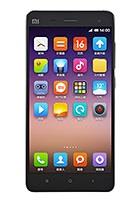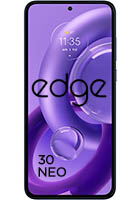Xiaomi Mi 4 (TD-LTE 16GB) vs Motorola Edge 30 Neo (128GB/8GB)
Side by side comparison between Xiaomi Mi 4 vs Motorola Edge 30 Neo phones, differences, pros, cons and full specifications. What's the better?
,
5"
IPS
IPS
1080x1920
13
MP
MP
8mp
2GB
RAM
RAM
Quad-core
3080
mAh
mAh
(Non removable)
vs
6.28"
POLED
POLED
1080x2400
64
MP
MP
32mp
8GB
RAM
RAM
Octa-core
4020
mAh
mAh
(Non removable)
What's the better phone? Motorola Edge 30 Neo (128GB/8GB)
The phonemore's choice is much more technical than personal. Therefore, you shouldn't only consider this. Our goal is to help you, but what's important to us may not be important to you. You decide which one is the best! Comment!
| 21 Common items in both devices |
| Dual-LED flash |
| Only digital zoom |
| Autofocus / PDAF: phase detection autofocus |
| f/1.8 (aperture) |
| (front) Full HD (1920x1080) |
| Capacitive |
| Multitouch |
| +14 specs and more in the table below |
Check the comparison table below for more items that are not evaluated in comparison score above.
Highlight differences Clear highlight📱 Model features | ||
| Xiaomi Mi 4 (TD-LTE 16GB) | Motorola Edge 30 Neo (128GB/8GB) | |
| Model | Xiaomi Mi 4 (TD-LTE 16GB) | Edge 30 Neo (128GB/8GB) |
| Other model names | Xiaomi Mi4 4G TD-LTE for China, Xiaomi Leo | Lenovo Edge 30 Neo 5G XT2245-1 Dual-SIM, PAV00007FR +Pantone |
| Country or region available |  China |  (Global, International) |
| Brand | Xiaomi | Motorola |
| Release date | 8/1/2014 | 10/7/2022, Announced: 9/8/2022 |
| Depth | 8.9 millimeters (0.35 inches) | 7.75 millimeters (0.31 inches) |
| Size (width x height) | 68.5 x 139.2 millimeters (2.7 x 5.48 in) | 71.2 x 152.9 millimeters (2.8 x 6.02 in) |
| Weight | 149 grams (5.22 ounces) | 155 grams (5.43 ounces) |
| Build, materials | feature not registered | Plastic body, glass front |
| Protection against water and others | Not supported | IP52 certified: protection against dust and splashing |
📲 Display | ||
| Xiaomi Mi 4 (TD-LTE 16GB) | Motorola Edge 30 Neo (128GB/8GB) | |
| Display type | TFT LED-Backlit IPS LCD | P-OLED |
| Screen size | 5" inches | 6.28" inches |
| Screen-to-body ratio | ~72.3% (screen-to-body ratio) | ~87.5% (screen-to-body ratio) |
| Display resolution | 1080x1920 pixels | 1080x2400 pixels (20:9) |
| Touchscreen | Capacitive Multitouch | Capacitive Multitouch |
| Pixel density (dot pitch) | 441 PPI | 419 PPI |
| Colors | 16 million | 1 billion |
| Scratch-resistant glass | Not supported | Not supported |
| Refresh rate | feature not registered | 120Hz |
| Display features | feature not registered | DCI-P3 |
🤖 Operating System | ||
| Xiaomi Mi 4 (TD-LTE 16GB) | Motorola Edge 30 Neo (128GB/8GB) | |
| System version | Android 4.4.3 KitKat | Android 12 |
| Firmware update | Android 6.0.1 Marshmallow | feature not registered |
| User Interface | feature not registered | My UX |
⚙️ Processor | ||
| Xiaomi Mi 4 (TD-LTE 16GB) | Motorola Edge 30 Neo (128GB/8GB) | |
| Chipset | 32bit: Qualcomm Snapdragon 801 MSM8974-AC (28nm) | 64bit: Qualcomm Snapdragon 695 (SM6375) (6nm) |
| CPU | Quad-core, 1 processor: 4x 2.5GHz Krait 400 (Quad-core) | Octa-core, 2 processors: 2x 2.2GHz Kryo 660 Gold (Dual-core) 6x 1.7GHz Kryo 660 Silver (Hexa-core) |
| GPU graphical controller | Qualcomm Adreno 330 578Mhz | Qualcomm Adreno 619 (840MHz) |
| Performance (benchmark) | feature not registered | AnTuTu: 380818 (v9) Geekbench: 1964 (v5.1) GFXBench: 16fps (ES 3.1 onscreen) |
💽 Memory and storage | ||
| Xiaomi Mi 4 (TD-LTE 16GB) | Motorola Edge 30 Neo (128GB/8GB) | |
| RAM memory | 2GB LPDDR3 | 8GB LPDDR4X |
| Internal storage | 16GB (13GB available) | 128GB (104GB available) UFS 2.2 |
| External storage | Not supported | Not supported |
📶 Mobile networks | ||
| Xiaomi Mi 4 (TD-LTE 16GB) | Motorola Edge 30 Neo (128GB/8GB) | |
| Dual-SIM | Not supported | Dual-SIM Standby - Call active on one sim card |
| SIM card | 1 slot (Single-SIM) micro-SIM (3FF) | 2 slots (Dual-SIM) nano-SIM (4FF) |
| Maximum Download / Upload | 100/50 Mbps | 2000/1024 Mbps |
| Network technology | 2G, 3G, 4G | 2G, 3G, 4G, 5G |
| Frequency, bands | Expand band details Collapse details | |
| GSM MHz band | Quad-Band 850/900/1800/1900 | Quad-Band 850/900/1800/1900 |
| Primary 2G network | CDMA 800/1900, GSM 850/900/1800/1900 | GSM 850/900/1800/1900 |
| Primary 3G network | CDMA2000 1xEV-DO TD-SCDMA 1900/2000 | UMTS 850/900/1700/1900/2100 |
| Primary 4G network | TD-LTE 1900/2300/2500/2600 (Bands 38,39,40,41) | LTE Cat15 (1, 2, 3, 4, 5, 7, 8, 12, 17, 20, 25, 26, 28, 32) TD-LTE (38, 40, 41, 42, 43) VoLTE |
| Primary 5G network | Not supported | SA/NSA (1, 3, 5, 7, 8, 20, 28, 38, 40, 41, 66, 78) |
| Primary data network | GPRS, EDGE, CDMA2000 EV-DO Rev 0, CDMA2000 EV-DO Rev A, TD-SCDMA, TD-HSDPA, TD-LTE | GPRS, EDGE, UMTS, HSDPA, HSUPA, HSPA+, TD-LTE, LTE, LTE-A, SA/NSA |
| Secondary 2G network | Not supported | GSM 850/900/1800/1900 |
| Secondary 3G network | Not supported | UMTS 850/900/1700/1900/2100 |
| Secondary 4G network | Not supported | LTE Cat15 (1, 2, 3, 4, 5, 7, 8, 12, 17, 20, 25, 26, 28, 32) TD-LTE (38, 40, 41, 42, 43) VoLTE |
| Secondary data network | Not supported | GPRS, EDGE, UMTS, HSDPA, HSUPA, HSPA+, TD-LTE, LTE, LTE-A, SA/NSA |
📷 Camera | ||
| Xiaomi Mi 4 (TD-LTE 16GB) | Motorola Edge 30 Neo (128GB/8GB) | |
| Back camera (main camera) | 13 megapixels | (dual camera) 64 megapixels 13MP ultrawide f/2.2120°1.12µmAF |
| Main camera resolution | 4128x3096 pixels | 10120x6328 pixels |
| Video recording (primary) | 4K UHD (3840x2160) 30 fps | Full HD (1920x1080) 60 fps |
| Flash | Dual-LED flash | Dual-LED flash |
| Focal aperture | f/1.8 (aperture) | f/1.8 (aperture) |
| Focal length | feature not registered | feature not registered |
| Sensor size | 1/3" inches | feature not registered |
| Pixel size | 1.12µm pixel | 0.7µm pixel |
| Autofocus | Autofocus | PDAF: phase detection autofocus |
| Touch focus | Supported | Supported |
| Image stabilization | EIS: Digital stabilization | OIS: Optical stabilization |
| Zoom | Only digital zoom | Only digital zoom |
| Face/smile detection | Face detection, Smile detection | Face detection, Smile detection |
| BSI sensor | Not supported | Supported |
| HDR | HDR photo/video only main camera | HDR photo/video on both cameras |
| Camera extras | feature not registered | 1080p@30/60fps 1080p@120fps (slow motion) |
📸 Front camera | ||
| Xiaomi Mi 4 (TD-LTE 16GB) | Motorola Edge 30 Neo (128GB/8GB) | |
| Front camera (secondary) | 8 megapixels | 32 megapixels |
| Front camera resolution | 3264x2448 pixels | 6528x4896 pixels |
| Video recording (secondary) | Full HD (1920x1080) | Full HD (1920x1080) |
| Front flash | Not supported | Not supported |
| Focal aperture | f/1.8 (aperture) | f/2.4 (aperture) |
| Focal length | feature not registered | feature not registered |
| Sensor size | feature not registered | feature not registered |
| Pixel size | feature not registered | 0.7µm pixel |
🔉 Sound and multimedia | ||
| Xiaomi Mi 4 (TD-LTE 16GB) | Motorola Edge 30 Neo (128GB/8GB) | |
| Loudspeaker | Supported | Stereo sound with dual speakers 24-bit/192kHz Dolby Atmos |
| Active noise cancellation | 2 microphones or more | 2 microphones or more |
| Radio | FM | Not supported |
| TV | Not supported | Not supported |
| Video formats | MP4, DivX, XviD, H.264, H.263, WMV | MP4, H.265, H.264, H.263, XviD, MKV |
| Audio formats | MP3, WAV, eAAC+, FLAC | MP3, WAV, WMA, eAAC+, FLAC |
🔌 Connectivity | ||
| Xiaomi Mi 4 (TD-LTE 16GB) | Motorola Edge 30 Neo (128GB/8GB) | |
| USB | MicroUSB 2.0 | USB 2.0 Type-C, USB OTG On-The-Go |
| Audio output | 3.5mm jack | Type-C reversible connector |
| TV output | Micro-B USB MHL | USB Type-C SlimPort® |
| Bluetooth | 4.0 + A2DP | 5.1 + A2DP/LE |
| WiFi | 802.11 a/b/g/n/ac [wifi5] (2.4GHz, 5GHz) WiFi Direct, hotspot | 802.11 a/b/g/n/ac [wifi5] (2.4GHz, 5GHz) + MIMO WiFi Direct, hotspot |
| DLNA | Supported | Not supported |
| GPS | A-GPS, GeoTagging, GLONASS | A-GPS, GeoTagging, GLONASS, GALILEO |
| NFC | Supported | Supported |
| Infrared port | Supported | Not supported |
🧭 Sensors | ||
| Xiaomi Mi 4 (TD-LTE 16GB) | Motorola Edge 30 Neo (128GB/8GB) | |
| Sensors | Accelerometer Ambient light sensor Barometer Compass Gyroscope Hall effect Proximity sensor | Accelerometer Ambient light sensor Compass Face unlock 2D Fingerprint sensor (under display) Proximity sensor |
| Vibrating alert | Supported | Supported |
🔋 Battery | ||
| Xiaomi Mi 4 (TD-LTE 16GB) | Motorola Edge 30 Neo (128GB/8GB) | |
| Battery type | LiPo: li-ion polymer (Non removable) | LiPo: li-ion polymer (Non removable) |
| Battery capacity | 3080 mAh | 4020 mAh |
| Charger, watts | Wired charging | 68W Wired fast charging Reverse charging by cable |
| Inductive / wireless charging | feature not registered | 5W Qi wireless charging |
| Talk time autonomy | feature not registered | feature not registered |
| Standby | 280 hours (11.7 days) | feature not registered |
➕ Other features | ||
| Xiaomi Mi 4 (TD-LTE 16GB) | Motorola Edge 30 Neo (128GB/8GB) | |
| Call control | Voice dialing, Voice recorder, Voice commands | Voice dialing, Voice recorder, Voice commands |
| Messaging | SMS (Swype), MMS, E-mail, Push mail | SMS (T9), MMS, E-mail, Push mail |
| Hands-free calling | Supported | Supported |
| Video calling | Supported | Supported |
| Ringtones | Polyphonic and customized | Polyphonic and customized |
| Web browser | HTML, XHTML, HTML5 | HTML, XHTML, HTML5 |
| Antenna | Internal antenna | Internal antenna |
| Qwerty physical keyboard | Not supported | Not supported |
| Miscellaneous | • Colors: Black, White • USB OTG On-The-Go 1.3 • MI UI 5.0 • WiFi display • Java framework | • Colors: Black Onyx, Ice Palace, Very Peri, Aqua Foam • Protective case included • ThinkShield • Ready For |
☢️ Radiation rate | ||
| Xiaomi Mi 4 (TD-LTE 16GB) | Motorola Edge 30 Neo (128GB/8GB) | |
| SAR 1.6W/kg (USA, Mexico, etc.) | feature not registered | feature not registered |
| SAR 2W/kg (Europe, UK, etc.) | feature not registered | feature not registered |


 9 Advantages
9 Advantages  22 Advantages
22 Advantages